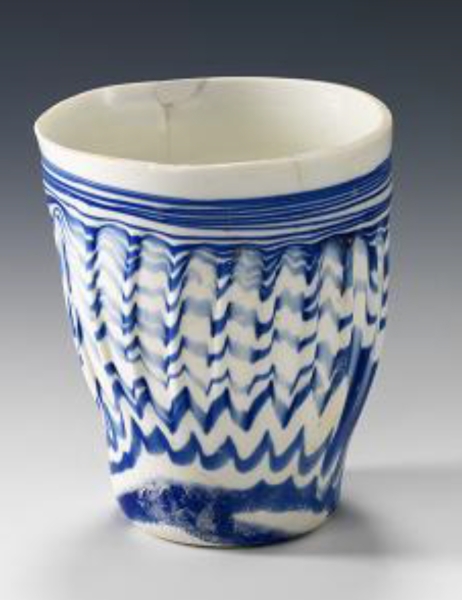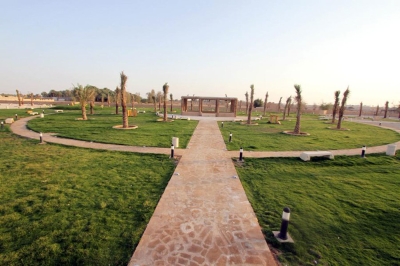
The Glass Cup is one of the archaeological artifacts selected for display in the Saudi Archaeological Masterpieces Through the Ages Exhibition, held at the Louvre Museum in Paris, the capital of France, in 2010. The exhibition featured three hundred artifacts made from various materials and spanning different historical periods, all originating from various provinces across the Kingdom of Saudi Arabia. These artifacts are categorized into three historical groups: prehistoric artifacts, pre-Islamic artifacts, and Islamic-era artifacts.
Description of the glass cup
It is a cup made of white glass paste and was discovered at the Qaryat al-Faw Archaeological Site, located in southeastern Wadi ad-Dawasir Governorate in Riyadh Province of Saudi Arabia.
The glass cup narrows at the bottom and gradually widens toward the top. It has a flat base and a wide mouth with an upright rim extending from the body. The cup's body features a ribbed texture, while the base has a shallow concavity. The exterior surface is decorated with a thick dark blue line at the base that splits into two; the upper line terminates in three teeth-like shapes. Above this, there is a blank space followed by two irregularly wavy lines. Then, a sequence of vertically arranged horizontal bands emerges from the ends of the second wavy line, adorned with successive vertical strips. Above these bands, a series of alternating vertical lines encircles the vessel in blue. The outer surface of the cup's rim retains the color of the glass paste.
History of the glass cup
The glass cup dates back to between the third century BCE and the third century CE and was used for drinking. Its discovery resulted from archaeological survey and excavation efforts conducted by Saudi Arabia's antiquities and museums sector over the past years. It is among the findings of Saudi archaeologists, scientific expeditions, and joint research teams.
Dimensions of the glass cup
Cup diameter: 8.5 cm.
Base diameter: 5.5 cm.
Cup height: 10.3 cm.
Significance of the glass cup
This glass cup is distinguished by the fluidity of its artistic lines. The harmony of the decorative elements on its body reflects the craftsmanship and accumulated expertise in glassmaking at Qaryat al-Faw.
The cup is registered under number 45 F 16 and is preserved at the Museum of the Archaeology Department at King Saud University in Riyadh.
Related quizzes
Related articles

